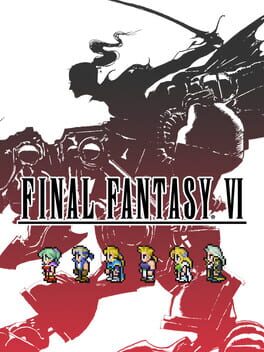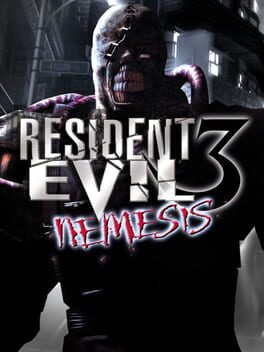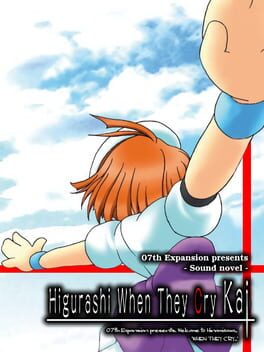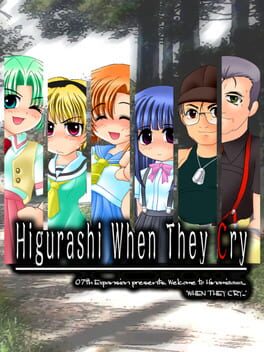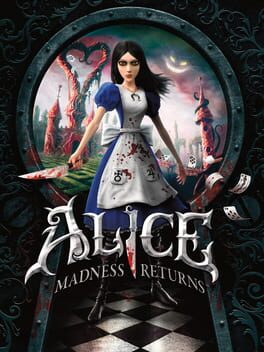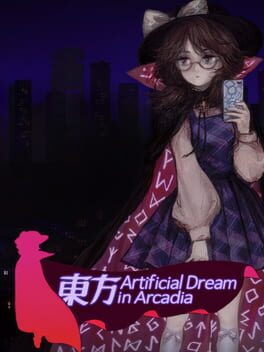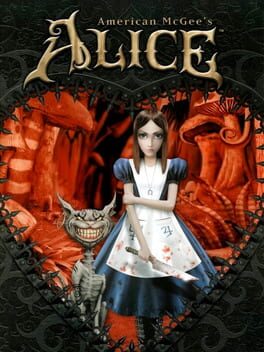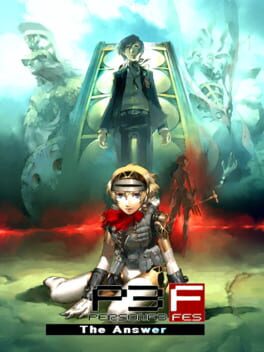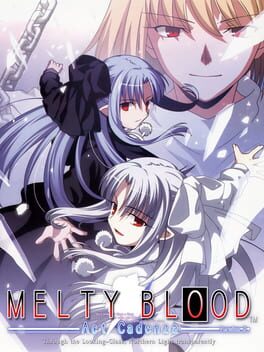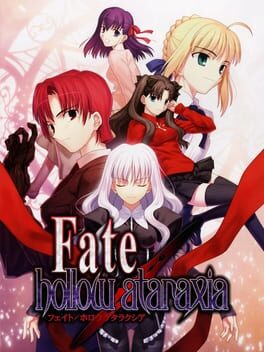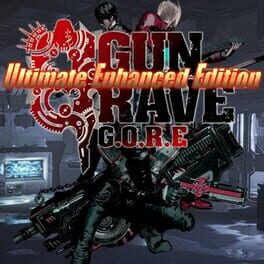HowardHeyman
2022
While I can attest to other RPGs from the era that appeal to me on a more fundamental level, be it aesthetically, interactively or thematically; I can scarcely think of many that are as consistently solid as Final Fantasy VI. For the time, you can hardly find other games with such a well-rounded and fun cast or with such breathtaking sprite work. One thing you definitely won't find in any other game, both then and now, is Nobuo Uematsu's 16-bit soundtrack masterpiece which elevates the whole experience to a new level.
Despite some gameplay depth regression from Final Fantasy V due to the loss of the job system, the inclusion of Espers and Relics do help bridge the gap enough to make the game fun to play. Although, because of a lack of balance, it does admittedly suffer from certain parts being too frustratingly clunky or uninspiringly easy.
Despite some gameplay depth regression from Final Fantasy V due to the loss of the job system, the inclusion of Espers and Relics do help bridge the gap enough to make the game fun to play. Although, because of a lack of balance, it does admittedly suffer from certain parts being too frustratingly clunky or uninspiringly easy.
A game that is too apparently stitched together from the scraps left from Resident Evil 2. Though I appreciate some of it's attempts to experiment with the core series formula, Resident Evil 3 doesn't do well enough at everything to be the true next step the series needed after it's first sequel. For once, I find the emphasis on action to be overbearing, as it highlights the discomfort of survival horror combat with few of the resource management benefits. The open nature of Raccoon City is also quickly phased out as it becomes clear that the game is much more linear in scope compared to its predecessors. Still, Resident Evil 3 was undeniably memorable, especially thanks to the rewarding gameplay decisions offered by gunpowder mixing and the ever-present Nemesis pursuer.
One of the greatest Heel–Face Turns in the history of visual novels. Once you come prepared from reading the question arcs, Kai assaults you with a tremendous shift in tone, direction and message that realizes the ultimate sincerity that makes this story so touching. Kai's four chapters are the lynchpin that not only holds the Higurashi saga together, but also let the world know the full potential of Ryukishi07 as a writer.
So far as humble beginnings go, this is as humble as it gets. Though for all intents and purposes, Higurashi's Question Arcs are effectively the trojan horse that prepares you for the 'tour de force' that is the Answer Arcs, so long as you're actively trying to engage with the material beyond the surface.
A good sequel to American McGee's Alice; but a below average game in more or less every other area. If we approach the game as more than the sum of its parts, then I undoubtedly enjoy the direction taken with the story and art. Taking Alice's personal journey from the first game and expanding upon it to allow her to take power away from her abusers is a unique and solid thematic follow-up, but the game's uneven structure and execution towards the climax does falter. The game is a beauty to look at, still looking striking even 10 years later, and the accompanying soundtrack is pleasantly atmospheric, though not as strong as the first.
If this is all you need to enjoy the game, then Alice's sequel may be a great follow-up, but when deconstructing every aspect of it's design I found an experience that was too dull, repetitive and underdeveloped to consider passable. Madness Returns is the kind of game where the cut content is transparent, as the reuse of level ideas and enemy encounters mash against a lack of execution in areas the game really should've expanded upon, like the London segments. With combat and platforming as mechanically simplistic as this game's; creative level design and tight pacing is needed to keep things engaging, but Madness Returns is more preoccupied with adding the most shallow variety in the forms of undercooked shooting, rhythm and puzzle segments which feel like blatant padding.
Despite my overall conflicted thoughts, I feel like I'm being more negative than the game deserves. Ultimately I'd recommend it to people who've played the first game, though I honestly wouldn't want to revisit it anytime soon.
If this is all you need to enjoy the game, then Alice's sequel may be a great follow-up, but when deconstructing every aspect of it's design I found an experience that was too dull, repetitive and underdeveloped to consider passable. Madness Returns is the kind of game where the cut content is transparent, as the reuse of level ideas and enemy encounters mash against a lack of execution in areas the game really should've expanded upon, like the London segments. With combat and platforming as mechanically simplistic as this game's; creative level design and tight pacing is needed to keep things engaging, but Madness Returns is more preoccupied with adding the most shallow variety in the forms of undercooked shooting, rhythm and puzzle segments which feel like blatant padding.
Despite my overall conflicted thoughts, I feel like I'm being more negative than the game deserves. Ultimately I'd recommend it to people who've played the first game, though I honestly wouldn't want to revisit it anytime soon.
To reimagine Alice's Adventures in Wonderland and Through the Looking Glass as a grimdark third person shooter is a silly concept looking back, but it ultimately works wonders thanks to amazingly polished visuals and soundtrack that serve as a wonderful time-capsule of late 90s to early 2000s PC game aesthetics. These aesthetics carry the game for the entire duration of its runtime, even despite its simple story and somewhat bare mechanics.
As a proper shooter, the game doesn't aim to exceed anything that existed at the time. Though the level design lends itself to inventive environments, and the variety of different weapons is welcome, there is not much to differentiate this game from others of the time. In fact, due to poor weapon balance, some frustrating enemy design, and unwieldy platforming, I tend to find Alice to be falling a bit behind its contemporaries in the gameplay department, even if it does more than make up for it in terms of aesthetics.
As a proper shooter, the game doesn't aim to exceed anything that existed at the time. Though the level design lends itself to inventive environments, and the variety of different weapons is welcome, there is not much to differentiate this game from others of the time. In fact, due to poor weapon balance, some frustrating enemy design, and unwieldy platforming, I tend to find Alice to be falling a bit behind its contemporaries in the gameplay department, even if it does more than make up for it in terms of aesthetics.
2007
After playing through Persona 3 again after a 10 year gap since my last playthrough, I think my feelings of the game have solidified much more strongly.
Ultimately, I find that a game like Persona 3 is a lightning in a bottle scenario that is difficult to replicate in its current form. Every creative decision creates a sense of cohesion that is so unique and so perfect for this game and this game's themes alone.
Death is a fitting theme for a development studio worried about the prospect of shutting down for good if the game didn't become a success, and for that reason there is a strong conviction to every aspect of the thematic design of this game. Every decision, from the UI, to character design, story motifs and gameplay structure not only helps give the game a strong and unique identity that sets it apart from anything at the time, but also helps reinforce the game's broad and heavy-hitting themes.
Of course, not every decision pays off. As the first entry in the series that tried to stray far away from the standard dungeon crawling formula of Shin Megami Tensei, it is only natural that many poor decisions came as a result. Persona 3's structure is filled with many decisions that get in the way of a smooth experience, from uneven pacing to poor gameplay balance, but despite all this there is a soul to Persona 3 that not even its successors have managed to replicate.
For all the improvements made to the formula in later games, they never quite achieved the level of emotional resonance and thematic transcendence as Persona 3. The game was made with a certain mindset, creative drive and inexperience that made it greater than the sum of its parts. For that reason, it is an essential RPG classic. A journey worth embarking on that will give you plenty to think about and cherish for years to come.
NOTE: This review is of the main campaign known as "The Journey". I have a separate review reflecting my thoughts of "The Answer" campaign by itself.
Ultimately, I find that a game like Persona 3 is a lightning in a bottle scenario that is difficult to replicate in its current form. Every creative decision creates a sense of cohesion that is so unique and so perfect for this game and this game's themes alone.
Death is a fitting theme for a development studio worried about the prospect of shutting down for good if the game didn't become a success, and for that reason there is a strong conviction to every aspect of the thematic design of this game. Every decision, from the UI, to character design, story motifs and gameplay structure not only helps give the game a strong and unique identity that sets it apart from anything at the time, but also helps reinforce the game's broad and heavy-hitting themes.
Of course, not every decision pays off. As the first entry in the series that tried to stray far away from the standard dungeon crawling formula of Shin Megami Tensei, it is only natural that many poor decisions came as a result. Persona 3's structure is filled with many decisions that get in the way of a smooth experience, from uneven pacing to poor gameplay balance, but despite all this there is a soul to Persona 3 that not even its successors have managed to replicate.
For all the improvements made to the formula in later games, they never quite achieved the level of emotional resonance and thematic transcendence as Persona 3. The game was made with a certain mindset, creative drive and inexperience that made it greater than the sum of its parts. For that reason, it is an essential RPG classic. A journey worth embarking on that will give you plenty to think about and cherish for years to come.
NOTE: This review is of the main campaign known as "The Journey". I have a separate review reflecting my thoughts of "The Answer" campaign by itself.
A bonus campaign that was probably more fitting to be a 2-hour OVA or movie. Though I find it to be a decent epilogue to the main story that helps elaborate on some key details about the plot and themes, and though I appreciate how it uses the game's ending as a jumping point to develop the game's cast a bit further, I still think The Answer is a waste of time because it is a sloppy and thoughtless addition in its construction and presentation.
While "The Journey" was a campaign carefully considered from its structure and gameplay to elaborate on its themes, I feel like "The Answer" copies the bare minimum without keeping the gameplay loop that made that journey fun in the first place. Without a clear separation of dungeon crawling and plot and without the benefits of social links, The Answer amounts to little more than 30-40 hours of meandering, meaningless dungeon padding with nuggets of story at the beginning and end to give said padding reason to exist.
If The Answer added anything more or had any unique aspect to its gameplay or presentation, it may have been a decent bonus, but as its stands it is perfectly skippable and not worth playing through for the few unique ideas it brings.
While "The Journey" was a campaign carefully considered from its structure and gameplay to elaborate on its themes, I feel like "The Answer" copies the bare minimum without keeping the gameplay loop that made that journey fun in the first place. Without a clear separation of dungeon crawling and plot and without the benefits of social links, The Answer amounts to little more than 30-40 hours of meandering, meaningless dungeon padding with nuggets of story at the beginning and end to give said padding reason to exist.
If The Answer added anything more or had any unique aspect to its gameplay or presentation, it may have been a decent bonus, but as its stands it is perfectly skippable and not worth playing through for the few unique ideas it brings.
A fantastically solid reworking of Re-Act that not only succeeds in giving the Melty Blood formula a more vivacious presentation, but also smooth out many of the edges and imbalances of its often frustrating predecessor. Ac Cadenza ensures a fun arcade experience that is easy to pick up, hard to master, and accessible to casual onlookers, Type-Moon fanatics and fighting game enthusiasts.
2005
Another Type-Moon meta-sequel following in the footsteps of Kagetsu Tohya which, unlike Kagetsu Tohya, manages to streamline the progression in such a way that the balance between lighthearted fanservice and bonus material is achieved much more efficiently. Though it's not perfect, it is perfectly well made and fun for those who finished reading the original novel.
This is the game where Kingdom Hearts gets kooky. To jump from a fairly straightfoward plot about Square-Enix OCs fighting dark Disney bad guys over to a plot about the main character being gaslit by modifying his memories in real-time is... Actually shockingly refreshing, though its not enough to make the game any better.
Chain of Memories is compact to a fault. I appreciate how much of the game is tailored to the GBA, right down to the great spritework, animations and the loving re-creations of Yoko Shimomura's KH1 music on the GBA sound chip. Even still, the gameplay wears thin over how much of this game consists of an extremely basic loop of exploring the same dungeons over and over in different layouts and coats of paint. Its scope is too limited for its own good, and the more you play, the more you begin to see the cracks in its balance and design. It can be a frustrating game to play until you find the one combination of cards that lets you breeze through every fight.
Even if you decide not to exploit the game, other issues come into play, like the cumbersome UI design and some of the more frustratingly gimmicky bosses. All of these issues are paramount in the extra "Dark" Riku campaign, which forces you into pre-made decks which often seem designed to inconvenience you more than to challenge you.
So far as "homework before playing KH2" goes, Chain of Memories could be worse, but it could've also been better. I would say I'd have trouble recommending it, but you're probably gonna play it or its remake no matter what to understand the plot of KH2 anyways.
Chain of Memories is compact to a fault. I appreciate how much of the game is tailored to the GBA, right down to the great spritework, animations and the loving re-creations of Yoko Shimomura's KH1 music on the GBA sound chip. Even still, the gameplay wears thin over how much of this game consists of an extremely basic loop of exploring the same dungeons over and over in different layouts and coats of paint. Its scope is too limited for its own good, and the more you play, the more you begin to see the cracks in its balance and design. It can be a frustrating game to play until you find the one combination of cards that lets you breeze through every fight.
Even if you decide not to exploit the game, other issues come into play, like the cumbersome UI design and some of the more frustratingly gimmicky bosses. All of these issues are paramount in the extra "Dark" Riku campaign, which forces you into pre-made decks which often seem designed to inconvenience you more than to challenge you.
So far as "homework before playing KH2" goes, Chain of Memories could be worse, but it could've also been better. I would say I'd have trouble recommending it, but you're probably gonna play it or its remake no matter what to understand the plot of KH2 anyways.
For the longest time, I've defended the original version of Gungrave G.O.R.E for what it represented for the gaming market. A true risk in the sense that it was willing to call-back to what the public considers "outdated" game design for the sake of revitalizing a series and genre that hadn't seen a game like it in such a long time. It was a loving homage to fans of action games from the 6th console generation era, which prioritized challenge and satisfying replayability over story, presentation and accessibility. It wasn't a game for everyone, but it was definitely a fun game for those who know where to look.
As Gungrave G.O.R.E received more updates and as developers responded to fan feedback, I became more and more worried about the developers becoming ashamed of their own vision, making the game easier and lowering the skill ceiling so it could be more accessible to a wider market that wouldn't really care about the game in the first place. Gungrave G.O.R.E Ultimate Enhanced Edition (GGGUEE) on Switch is the culmination of those fears.
The Switch version of Gungrave G.O.R.E sands off a lot of the edges of the original. Grave now runs while shooting, he gains art score for even basic kills, the score amounts have been multiplied, and a system has been implemented that increases Grave's bullet speed the higher the beat count is. The pattern of these changes is clear: GGGUEE is ultimately trying to rectify the "wrongs" of the original by making it more palatable for the average gamer. And to a degree, it does accomplish that goal, but to what end?
I do find GGGUEE less challenging and easier to control than its original release, but at the same time I lose the interest and love I have of replaying the game because the core and satisfying gameplay loop that balanced Grave's weaknesses with his strengths is completely gone now that I can easily move everywhere and shoot everything. No longer do I have to carefully consider when to parry, dodge and use a meat shield. No longer do I have to think of the right moments to go on the offensive with a devastating demolition shot, with Storm Barrage or with Bullet Dance. In fact, my work is cut out for me. All I have to do is run around and Hold ZR. Eventually, I'll win by default. Of course, if I put the minimal amount of effort, I could also receive an S rank too.
While it may seem my argument is based on shaming people who had a hard time adapting to Gungrave G.O.R.E's difficulty, that is far from the case. The fact of the matter is that, at its core, for Gungrave G.O.R.E to be a good mindless action game, it needs a complete redesign from the ground up that isn't compatible with the hardcore design of the game's mechanics and levels. The "Over 100 improvements" claim is ultimately an exaggeration when so much of the core of this game is the same, but it is only the small changes which change it for the worse. GGGUEE has turned this from a game that a small subsect of people would enjoy and replay, to a game that, in all likelihood no one will ever play.
As harsh as that sounds, looking at the sheer lack of response to this port outside of a small handful, I ultimately have to believe it to be true. This is no due in part due to the rest of GGGUEE's downgrades, which range from a cut to 30fps in docked mode and inconsistently low framerate on handheld (compared to the smooth 60fps from the console version), downgraded visuals across the board, lack of anti-aliasing, and so on. To say that this is the ultimate and superior experience is not something I can agree with on any capacity.
To make the medicine go down, this new release includes multiple new characters that you can purchase as DLC. Unfortunately, these new characters don't quite add enough to the experience to justify any of the aforementioned changes. While they are fun to play, they're just too little to compensate the harsh qualities of this port. This is, of course, without mentioning that these characters are often more shallow to play as compared to Grave thanks to their limited moveset and that one of the DLC characters is a reskinned version of a character unlockable in the base game.
As harsh as I sound, I do still think the team had the best intentions in mind. Considering the poor sales of the original release and the financial struggle of losing the backing of their publisher, Prime Matter, it must've been really difficult to make so many of these compromises for the sake of breaking even. But that sympathy is hard earned when the team has otherwise made the situation worse with many of the decisions made with this release, such as locking many of the exclusive DLC characters behind DLC, their decision to not port any of the new content to the existing versions, their lack of marketing outside of limited social media posts, and of course, their misleading advertising that overinflates the amount of changes made to the experience and advertises characters without disclosing they're only available as DLC.
If not apparent by now, I shall continue to play the original release of Gungrave G.O.R.E as much as I can. I can only hope that, for survival and next, Iggymob learns the story of Icarus: "Don't fly too close to the sun, or else you'll get burnt".
As Gungrave G.O.R.E received more updates and as developers responded to fan feedback, I became more and more worried about the developers becoming ashamed of their own vision, making the game easier and lowering the skill ceiling so it could be more accessible to a wider market that wouldn't really care about the game in the first place. Gungrave G.O.R.E Ultimate Enhanced Edition (GGGUEE) on Switch is the culmination of those fears.
The Switch version of Gungrave G.O.R.E sands off a lot of the edges of the original. Grave now runs while shooting, he gains art score for even basic kills, the score amounts have been multiplied, and a system has been implemented that increases Grave's bullet speed the higher the beat count is. The pattern of these changes is clear: GGGUEE is ultimately trying to rectify the "wrongs" of the original by making it more palatable for the average gamer. And to a degree, it does accomplish that goal, but to what end?
I do find GGGUEE less challenging and easier to control than its original release, but at the same time I lose the interest and love I have of replaying the game because the core and satisfying gameplay loop that balanced Grave's weaknesses with his strengths is completely gone now that I can easily move everywhere and shoot everything. No longer do I have to carefully consider when to parry, dodge and use a meat shield. No longer do I have to think of the right moments to go on the offensive with a devastating demolition shot, with Storm Barrage or with Bullet Dance. In fact, my work is cut out for me. All I have to do is run around and Hold ZR. Eventually, I'll win by default. Of course, if I put the minimal amount of effort, I could also receive an S rank too.
While it may seem my argument is based on shaming people who had a hard time adapting to Gungrave G.O.R.E's difficulty, that is far from the case. The fact of the matter is that, at its core, for Gungrave G.O.R.E to be a good mindless action game, it needs a complete redesign from the ground up that isn't compatible with the hardcore design of the game's mechanics and levels. The "Over 100 improvements" claim is ultimately an exaggeration when so much of the core of this game is the same, but it is only the small changes which change it for the worse. GGGUEE has turned this from a game that a small subsect of people would enjoy and replay, to a game that, in all likelihood no one will ever play.
As harsh as that sounds, looking at the sheer lack of response to this port outside of a small handful, I ultimately have to believe it to be true. This is no due in part due to the rest of GGGUEE's downgrades, which range from a cut to 30fps in docked mode and inconsistently low framerate on handheld (compared to the smooth 60fps from the console version), downgraded visuals across the board, lack of anti-aliasing, and so on. To say that this is the ultimate and superior experience is not something I can agree with on any capacity.
To make the medicine go down, this new release includes multiple new characters that you can purchase as DLC. Unfortunately, these new characters don't quite add enough to the experience to justify any of the aforementioned changes. While they are fun to play, they're just too little to compensate the harsh qualities of this port. This is, of course, without mentioning that these characters are often more shallow to play as compared to Grave thanks to their limited moveset and that one of the DLC characters is a reskinned version of a character unlockable in the base game.
As harsh as I sound, I do still think the team had the best intentions in mind. Considering the poor sales of the original release and the financial struggle of losing the backing of their publisher, Prime Matter, it must've been really difficult to make so many of these compromises for the sake of breaking even. But that sympathy is hard earned when the team has otherwise made the situation worse with many of the decisions made with this release, such as locking many of the exclusive DLC characters behind DLC, their decision to not port any of the new content to the existing versions, their lack of marketing outside of limited social media posts, and of course, their misleading advertising that overinflates the amount of changes made to the experience and advertises characters without disclosing they're only available as DLC.
If not apparent by now, I shall continue to play the original release of Gungrave G.O.R.E as much as I can. I can only hope that, for survival and next, Iggymob learns the story of Icarus: "Don't fly too close to the sun, or else you'll get burnt".
A charming little game that boasts dazzling pixel art and an enchanting soundtrack. Thanks to great animation work, the gameplay is immediately satisfying and gives you enough enjoyment throughout its short runtime. It is however somewhat unambitious and can be easily mastered within a few play-sessions. Due to a lack of difficulty and mechanical depth, the game doesn't offer much in terms of replayability, which only makes some of the less favorable gameplay and control decisions stand out more. It is also difficult to recommend to anyone not familiar with the Record of Lodoss War series, as the story makes little attempt to contextualize what is effectively the prologue to a sequel series of novels.
A game of peak highs and bottom lows.
Radiant Dawn is an excellent contrast to its predecessor, Path of Radiance, in just about every facet of its design. Where Path of Radiance was a personal journey centered on Ike and the Greil Mercenaries, Radiant Dawn is an epic episodic tale with many different armies, protagonists and antagonists clashing together. Where Path of Radiance excelled at a consistently solid Fire Emblem experience, Radiant Dawn radically changes aspects of the series' design and structure to both good and bad results.
Radiant Dawn, at its very best, exponentially raises the best aspects of Fire Emblem gameplay. The map design is solid almost all throughout, and there is a lot of fun picking and raising all of your unique units while trying to manage the resources of three separate armies. However, the lack of consistency is what calls these strengths into question. While the game has an amazing climax, it has a frustrating prologue. One unit may have amazing potential that is satisfying to build up up to the climax, while other units are either completely overpowered or so underpowered to the point they're an active burden to your army with no clear upside.
Similarly, the game's plot is too grand for its own good. While its ambition is admirable and it ultimately pays off in a complex and memorable conflict, I feel like so much of the writing in-between doesn't pay off because it either rushes too much through the pacing, stalls the pacing for no adequate reason, or simply tries to achieve too much with too little time to afford it. For every great protagonist like Ike, there is always a confusingly written protagonist like Micaiah.
How much you can tolerate this lack of consistent quality and difficulty will ultimately determine how you feel about Radiant Dawn. Personally, I find the game perfectly symbiotic to Path of Radiance and end up having more fondness for it as a result. It ultimately improves upon a lot of what I criticized from its predecessor, like visuals and music as an example, and it also gives you so much to work with in terms of gameplay that it makes Path of Radiance look tame by comparison. While I am conflicted about the frequent jumps in quality, I find that when experiencing the Tellius duology as a whole, Radiant Dawn is a great way to cap off the experience and a game I would fondly revisit in the future.
Radiant Dawn is an excellent contrast to its predecessor, Path of Radiance, in just about every facet of its design. Where Path of Radiance was a personal journey centered on Ike and the Greil Mercenaries, Radiant Dawn is an epic episodic tale with many different armies, protagonists and antagonists clashing together. Where Path of Radiance excelled at a consistently solid Fire Emblem experience, Radiant Dawn radically changes aspects of the series' design and structure to both good and bad results.
Radiant Dawn, at its very best, exponentially raises the best aspects of Fire Emblem gameplay. The map design is solid almost all throughout, and there is a lot of fun picking and raising all of your unique units while trying to manage the resources of three separate armies. However, the lack of consistency is what calls these strengths into question. While the game has an amazing climax, it has a frustrating prologue. One unit may have amazing potential that is satisfying to build up up to the climax, while other units are either completely overpowered or so underpowered to the point they're an active burden to your army with no clear upside.
Similarly, the game's plot is too grand for its own good. While its ambition is admirable and it ultimately pays off in a complex and memorable conflict, I feel like so much of the writing in-between doesn't pay off because it either rushes too much through the pacing, stalls the pacing for no adequate reason, or simply tries to achieve too much with too little time to afford it. For every great protagonist like Ike, there is always a confusingly written protagonist like Micaiah.
How much you can tolerate this lack of consistent quality and difficulty will ultimately determine how you feel about Radiant Dawn. Personally, I find the game perfectly symbiotic to Path of Radiance and end up having more fondness for it as a result. It ultimately improves upon a lot of what I criticized from its predecessor, like visuals and music as an example, and it also gives you so much to work with in terms of gameplay that it makes Path of Radiance look tame by comparison. While I am conflicted about the frequent jumps in quality, I find that when experiencing the Tellius duology as a whole, Radiant Dawn is a great way to cap off the experience and a game I would fondly revisit in the future.
